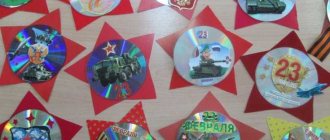Aesthetic education of children of senior preschool age
MINISTRY OF EDUCATION OF THE REPUBLIC OF BELARUS
COURSE WORK IN PEDAGOGY
"AESTHETIC EDUCATION OF SENIOR PRESCHOOL AGE"
TABLE OF CONTENTS
INTRODUCTION . . . . . . . . . . . . . . . . . . . . . . . . . . . .. . . . . . . . . . . . . . . . . . 4
CHAPTER 1. THEORETICAL FOUNDATIONS OF AESTHETIC EDUCATION OF PRESCHOOL CHILDREN……………………………………………………6
1.1. The essence of aesthetic education. . . . . . . . . . . . . . . . .. . . . . . . . . . . . …6
1.2. Psychological and pedagogical features of preschool age. . . .. . . 10
1.3. The role of nature in aesthetic education. . . . . . . . . . . . . . .. . . . . . . . . . 12
CHAPTER 2. WAYS TO IMPROVE WORK ON THE AESTHETIC EDUCATION OF CHILDREN USING NATURE…………………………………………………………….16
2.1. Determination of the level of aesthetic development of children of senior preschool age. . . . . . . . . . . . . . . . . . . . . . . . .. . . . . . . . . . . . . . . . . . . . ……………….16
2.2. Methodology for improving the work on aesthetic education of preschoolers using the means of nature. . . . . . . . . . . . . . . . . . . .. . . . . . . . . . . . . . .18
CONCLUSION . . . . . . . . . . . . . . . . . . . . . . . . . . . .. . . . . . . . . . . . . . .24
LIST OF REFERENCES….………………25
APPENDIX…………………………………………………….26
INTRODUCTION
Deep aesthetic feelings, the ability to perceive beauty in the surrounding reality and in art are an important condition in the spiritual life of a person. Aesthetics, as is known, is the science of beauty, and aesthetic education is an introduction to beauty in all its manifestations. Even the ancient Greeks believed that beauty, measure, harmony are not only standards of natural phenomena or works of art, but also principles of social life. Aesthetic education is easier and simpler to carry out when everything around a person is beautiful: the streets along which he rushes on business, the houses in which he lives, etc. We place special hopes on aesthetic education as a targeted system of measures designed to awaken in the soul of every person a craving for beauty, admiration for the beautiful in all its manifestations, which will not allow him to do evil, since evil is ugly. It is necessary to start introducing a person to art as early as possible - from preschool age, and to educate him not only as a contemplator and listener, but also as an active creator of beauty. The modern way of life, labor and social relations of people, and the surrounding nature create the prerequisites for the aesthetic development of a child. From early childhood, a child discovers and explores the world around him, he is drawn to the beautiful, bright and experiences the joy of communicating with nature. He discovers the world in a variety of colors and sounds. V.A. Sukhomlinsky wrote “The world surrounding a child is, first of all, the world of nature with an endless wealth of phenomena, with inexhaustible beauty.”
The topic of my research is “Aesthetic education of preschool children.” The relevance of the chosen topic is determined by the fact that in order to effectively carry out work on the aesthetic education of preschoolers using the means of nature, it is necessary to develop a set of classes aimed at educating, clarifying the feelings of a little person, and developing the ability to distinguish shades of color and sound.
The purpose of the study is to determine the most effective ways and methods of aesthetic education of children of senior preschool age using nature.
The object of the study is the aesthetic education of preschool children.
The subject of the study is the forms of work on the aesthetic education of preschoolers using nature.
Research objectives:
- To study the psychological and pedagogical foundations of aesthetic education of older preschoolers.
- Reveal the importance of nature in the aesthetic education of preschool children.
- To identify the main ways and methods of aesthetic education of children of senior preschool age using natural resources.
It can be assumed that if you develop a set of classes aimed at improving the aesthetic education of preschoolers using nature, you can get the following results:
- increase the level of aesthetic development of older preschoolers;
- increase the effectiveness of educators’ work in developing children’s cognitive interest in the beauty of the world around them;
- obtain high rates in the development of the preschooler’s personality as a whole.
Research methods:
- study of psychological, pedagogical and methodological literature on the research problem;
- monitoring the activities of preschool children;
- experimental work aimed at aesthetic education of preschool children using the means of nature.
Research base: preschool institution No. 251 in Minsk.
CHAPTER 1. THEORETICAL FOUNDATIONS OF AESTHETIC EDUCATION
1.1. The essence of aesthetic education
Adults and children constantly encounter aesthetic phenomena. In the sphere of spiritual life, everyday work, communication with art and nature, in everyday life, in interpersonal communication - everywhere the beautiful and the ugly, the tragic and the comic play a significant role. Beauty brings pleasure and pleasure, stimulates work activity, and makes meeting people pleasant. The ugly is repulsive. The tragic teaches empathy. Comic helps to fight shortcomings. The ideas of aesthetic education originated in ancient times. Ideas about the essence of aesthetic education, its tasks, and goals have changed since the times of Plato and Aristotle right up to the present day. These changes in views were due to the development of aesthetics as a science and understanding of the essence of its subject. The term “aesthetics” comes from the Greek “aisteticos” (perceived by the senses). Materialist philosophers (D. Diderot, N.G. Chernyshevsky) believed that the object of aesthetics as a science is the beautiful. This category formed the basis of the aesthetic education system. In our time, the problem of aesthetic education, personality development, and the formation of its aesthetic culture is one of the most important tasks facing the school. This problem has been developed quite fully in the works of domestic and foreign teachers and psychologists. Among them D.N. Jola, D.B. Kabalevsky, N.I. Kiyashchenko, B.T. Likhachev, A.S. Makarenko, B.M. Nemensky, V.A. Sukhomlinsky, M.D. Taboridze, V.N. Shatskaya, A.B. Shcherbo and others. In the literature used, there are many different approaches to the definitions of concepts, the choice of ways and means of aesthetic education. Let's look at some of them. V.N. Shatskaya in her book “General Issues of Aesthetic Education at School” writes: “Soviet pedagogy defines aesthetic education as cultivating the ability to purposefully perceive, feel and correctly understand and evaluate beauty in the surrounding reality - in nature, in public life, work, in artistic phenomena” [ 16. c. 6]. In a brief dictionary on aesthetics, aesthetic education is defined as “a system of activities aimed at developing and improving a person’s ability to perceive, correctly understand, appreciate and create the beautiful and sublime in life and art” [11 p. 451]. In both definitions, we are talking about the fact that aesthetic education should develop and improve in a person the ability to perceive beauty in art and in life, to correctly understand and evaluate it. D.B. Likhachev in his book “The Theory of Aesthetic Education of Schoolchildren” relies on the definition given by K. Marx: “Aesthetic education is a purposeful process of forming a creatively active personality of a child, capable of perceiving and appreciating the beautiful, tragic, comic, ugly in life and art, living and creating.” according to the laws of beauty" [13 p. 51]. The author emphasizes the leading role of targeted pedagogical influence in the aesthetic development of a child. For example, the development of a child’s aesthetic attitude towards reality and art, as well as the development of his intellect, is possible as an uncontrolled, spontaneous and spontaneous process. Communicating with the aesthetic phenomena of life and art, the child, one way or another, develops aesthetically. But at the same time, the child is not aware of the aesthetic essence of objects, and development is often determined by the desire for entertainment; moreover, without outside intervention, the child may develop incorrect ideas about life, values, and ideals. B.T. Likhachev, as well as many other teachers and psychologists, believes that only targeted pedagogical aesthetic and educational influence, involving children in a variety of artistic and creative activities, can develop their sensory sphere, provide a deep understanding of aesthetic phenomena, raise them to an understanding of true art, the beauty of reality and beauty in the human personality [13 p.42]. There are many definitions of the concept of “aesthetic education”, but having considered only a few of them, it is already possible to identify the main provisions that speak about its essence.
- Firstly, this is a process of targeted influence.
- Secondly, it is the formation of the ability to perceive and see beauty in art and life, and appreciate it.
- Thirdly, the development of the ability for independent creativity and creation of beauty.
Aesthetic education affects both artistic creativity and the aesthetics of everyday life, behavior, work, and relationships. Aesthetic education shapes a person with all aesthetically significant objects and phenomena, including art as its most powerful means. The main thing is to educate and develop such qualities, such abilities that will allow the individual not only to achieve success in any activity, but also to be the creator of aesthetic values, to enjoy them and the beauty of the surrounding reality. In addition to the formation of children’s aesthetic attitude to reality and art, aesthetic education simultaneously contributes to their comprehensive development. Aesthetic education contributes to the formation of a person’s morality, expands his knowledge of the world, society and nature. A variety of creative activities for children contribute to the development of their thinking and imagination, will, perseverance, organization, and discipline. Rukavitsyn M.M., believes: “The ultimate goal of aesthetic education is a harmonious personality, a comprehensively developed person: educated, progressive, highly moral, with the ability to work, the desire to create, who understands the beauty of life and the beauty of art” [21.p. 142]. This goal also reflects the peculiarity of aesthetic education as part of the entire pedagogical process.
The importance of aesthetic education lies in the fact that it makes a person nobler, forms positive moral feelings, and beautifies life. In preschool education, children are introduced to beauty, but we must understand that a child cannot fully understand where the truth of beauty is and where it is fake. Adults need to know the features of aesthetic education: - when talking about beauty, the teacher focuses on feelings, and not on content. — the teacher connects the aesthetic sense with sensory development, because the beauty of all objects is in the unity of shape, color, size, line and sounds. Therefore, it is necessary to organize didactic games for the sensory education of children - the child is imitative, so the teacher should give only positive role models.
Objectives of aesthetic education according to the Praleska program [25]:
- To instill in children a desire to know the world of beauty. To cultivate artistic taste, i.e. to please not only what is bright and catchy, but to be able to give an assessment and express one’s opinion.
- Develop aesthetic behavior.
- Develop artistic creativity in children: be able to sing, sculpt, read poetry, etc.
The main aesthetic category is the category of beauty. It expresses not only an aesthetic, but also a moral assessment. Knowledge about beauty is formed from early childhood through everyday objects that surround children, toys, and works of art. Gradually, by older preschool age, children master the concept of beauty and its application to the phenomena of nature, life, in assessing the activities of people and their actions. Children begin to understand which actions are assessed as beautiful and which as ugly. They will learn that a working person is beautiful, but a lazy person is ugly. Children are taught knowledge about various types of art from early childhood. Decorative toys, pictures, music, books enter a child’s life very early. Children develop knowledge about various expressive means of art (in sculpture, for example, material, pose, gesture, movement, etc.). During preschool age, knowledge about music is also formed: vocal and instrumental, the variety of its themes, genre, structure of individual works, means of musical expression, and various musical instruments. Children get acquainted with folk songs and dances, round dances, works of classical and modern music. The content of aesthetic education also includes the formation in children of elementary knowledge about fiction: Belarusian and foreign. Children acquire knowledge about poetry, stories, folklore: sayings, riddles, epics, and learn to understand the expressive means of literary works (realistic, fairy-tale, lyrical, heroic, humorous, etc.). Children of senior preschool age get acquainted with the names of famous writers, artists, composers, and illustrators of children's books. In the field of musical activity, children master the skills of a culture of listening to music, as well as simple performing skills: singing, musical-motor skills, skills of playing children's musical instruments. In visual activities, children acquire the skills of observing phenomena and objects in the surrounding world. Children also learn to look at works of fine art and analyze their content and means of expression (composition, color, etc.), and distinguish between genres. Aesthetic education can be defined as a purposeful, organized and controlled pedagogical process of formation in an individual of an aesthetic attitude to reality and aesthetic activity. In modern conditions, the following tasks of aesthetic education are put forward in kindergarten:
- Systematically develop the perception of beauty, aesthetic feelings, and ideas of children. All types of art, nature and everyday life contribute to this, causing immediate emotional responsiveness, joy, excitement, admiration, passion.
- To form the foundations of children’s aesthetic taste and the ability to independently evaluate works of art and life phenomena.
- Develop children's artistic and creative abilities.
The main task of aesthetic education is to form a creative attitude towards reality. Work on aesthetic education in a preschool institution is closely connected with all aspects of the educational process, its forms of organization are very diverse, and the results are manifested in various types of activities. This work involves nurturing an aesthetic attitude towards the surrounding reality through familiarization with social and natural phenomena in everyday life, in the process of work, and play; aesthetic education through the means of art. Nature is one of the important factors in the aesthetic development of a person. The most important condition for full-fledged aesthetic education is the environment that surrounds the child in kindergarten: the kindergarten building, the area with its equipment and green spaces, the object environment: furniture, toys. With their appearance, harmony of lines and shapes, color, and variety of content, they contribute to the formation of aesthetic perception and aesthetic feelings. The methodology of aesthetic education is based on the joint activity of the teacher and the child to develop his creative abilities for the perception of artistic values, for productive activity, and a conscious attitude towards the social, natural, and objective environment.
1.2. Psychological and pedagogical features of preschool age
In preschool age, a child increasingly learns about the world outside his family. The content of communication with other people becomes more complex, and the number of activities that the child masters increases. The main tendency of preschool age is expressed in the child’s desire to be the same as an adult. By imitating adults, the child demonstrates independence and learns to do socially useful work. The need to be like an adult is satisfied in role-playing games, the most complex type of activity that a child masters during preschool age. Therefore, when a child, when asked by his parents to do something, replies that he has not finished playing yet, you need to look at what exactly the child is playing. In games, children play out the roles and situations that they see in real life.
In preschool childhood, gaming methodological techniques are widely used. A child learns a variety of activities more successfully if the teacher creates play situations, if artistic material is presented in an exciting way, if play competitions arise between children. The most important significance of the game is that it is a form of organizing the lives of children in which certain relationships develop between them and their feelings, including aesthetic ones, are formed. Simple games in nature bring a lot of joy to children and at the same time develop their powers of observation, imagination, imagination, and sharpen their perception of beauty. Children’s creative abilities are manifested during manual labor, which give children in-depth knowledge about the quality and capabilities of various materials, and help consolidate positive emotions, stimulate the desire to work.
Understanding what it is
Aesthetic education of preschool children is a systematic and purposeful process aimed at developing the child’s artistic perception of the world. According to this concept, children must learn to see the beauty of the nature around them. In addition, they not only become familiar with art, but also
Education of aesthetics in children includes many concepts. It is inextricably linked with moral development. Therefore, the educational process is structured so that the child receives knowledge in all areas provided for by the Federal State Educational Standard. For example, you can make an integrated lesson consisting of aesthetic and moral education.
Goals and objectives
In the course of teaching activities, educators solve the following tasks:
- Helps the child develop aesthetic perception.
- Form an idea of aesthetics.
- Develop artistic and creative abilities.
- Form aesthetic taste.
The purpose of this training is to introduce the child to the world of art. He develops elementary ideas about its varieties. Children develop the prerequisites for value-semantic perception.
Meaning
From the first days of life, children begin to explore the world around them. Kids are drawn to bright toys and look at colorful pictures. Art, even the simplest, is a source of joyful emotions.
At the same time, children appreciate everything beautiful. They analyze the shape of things, their sound (musical instruments). The emotional response to everything attractive occurs unconsciously. Therefore, in early preschool age, aesthetic education is closely related to sensory culture.
Since the baby’s physical abilities are still limited, he studies all objects with his eyes and hands. The combination of the lines of things and their colors allows the child to appreciate their attractiveness.
A feature of aesthetic education is that the child experiences joyful emotions from meeting a beautiful object. It evokes a range of positive experiences in a child’s soul. This contributes to better development of the child.





